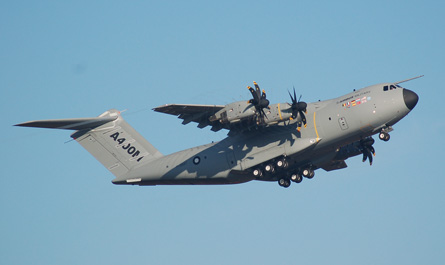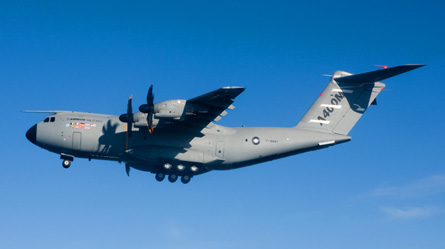Airbus Military's first A400M has entered a roughly one-month modification period, after completing its first seven test flights and spending more than 30h in the air.
Work to prepare aircraft MSN001 for its next phase of flight-envelope proving activities should resume in mid-February, with the transport likely to be moved to its main test centre in Toulouse, France at the end of its next sortie.
"We are probably about 30% through our first phase of testing, and today there are zero major issues," says Fernando Alonso, Airbus's senior vice-president flight and integration test. Noting that the company's multinational test team has already cleared the A400M's normal flight envelope, he adds: "we have good foundations."
 |
|---|
© Craig Hoyle/Flight International |
Airbus had originally hoped to log around 40 flight hours in the month following MSN001's 11 December first flight, but unusually poor weather conditions in Seville, Spain, restricted flight opportunities. The aircraft cannot currently be flown into clouds, or taxied through standing water, due to the strain gauges attached to its Ratier-Figeac propellers.
The programme's first of five flight test aircraft has so far been flown to an altitude of 34,000ft (10,400m) - 6,000ft below its planned maximum operating ceiling - and from stall warning to its top speed of 300kt (555km/h).
Sideslip testing to assess the behaviour of its airframe and propulsion system has been performed at up to 6° at 250kt and 15° at 130kt, with "blade stress and engine intake distortion well within limits", says Airbus chief test pilot military Ed Strongman.
"For the number of hours we've flown we've been tremendously productive," says Strongman. "We have collected a huge amount of data across a wide spectrum of the flight envelope."
Other work performed during recent flights has included extending the aircraft's emergency ram air turbine, and deploying its air data calibration equipment along a tail-housed trailing cone to assess the aerodynamic effects of various flap settings and landing gear positions.
Some buffeting has been encountered as the nose landing gear's front door is opened, and fixes previously implemented on the Airbus A340 and Beluga designs are being considered to rectify this. Disrupted airflow has also been found to affect the rear of the aircraft while its main landing gear is down.
 |
|---|
© A Doumenjou/Airbus Military |
The propulsion system's full authority digital engine control software has performed "quite well", according to Strongman, with a minor software problem which had affected one channel having been traced and a work-around procedure established. The aircraft's auxiliary power unit has also been used in flight to restart both the inboard and outboard engines, and pre-test concerns over its operating temperature have proved unfounded. The APU exhaust chimney above the starboard wing could be lowered, or removed entirely following the test results.
MSN001 has so far logged 311h of engine operations and over 130 engine starts, including while performing 40 rejected take-offs to gather data on the operation of the TP400 and the A400M's braking system.
Once it resumes testing, Alonso says the aircraft will begin to explore the "peripheral areas" of its handling qualities, including stall and deep stall investigations. It is currently being equipped with a rocket in its tail, which could be fired for around 5s if required to help its pilots recover it from a deep stall.
Other modifications to be introduced include replacing part of the rear nacelle above the Europrop International TP400-D6 engine's tail cone. This fix was successfully trialled on one engine during the sixth test flight to resolve an overheating issue encountered during some ground operations. A small structural and software change will also be made to enable the aircraft's cargo ramp to be opened during flight.
Meanwhile, MSN002 will be handed over to the flight test team in the third week of February, with the aircraft likely to fly for the first time by March.
Source: Flight International



















